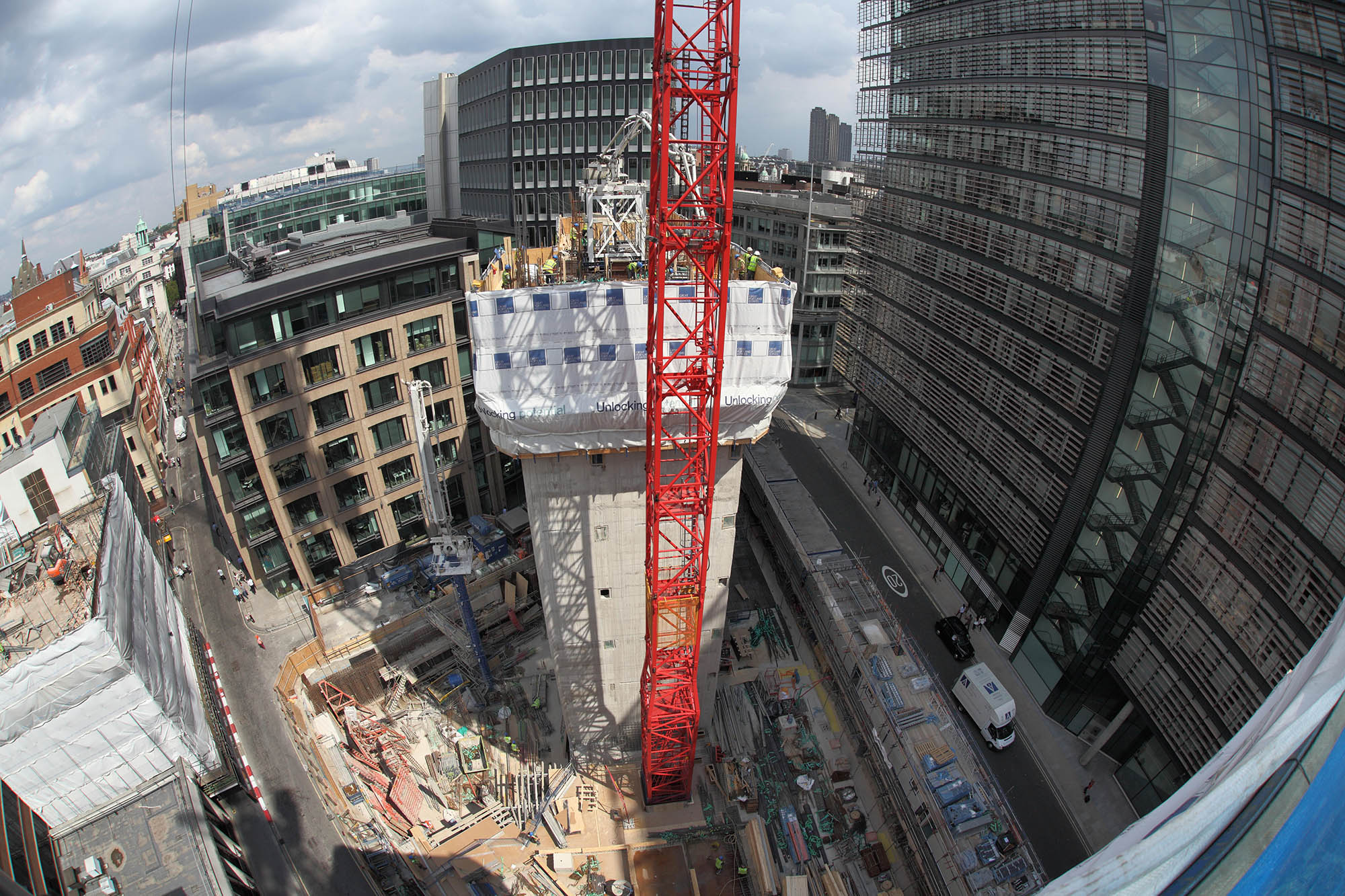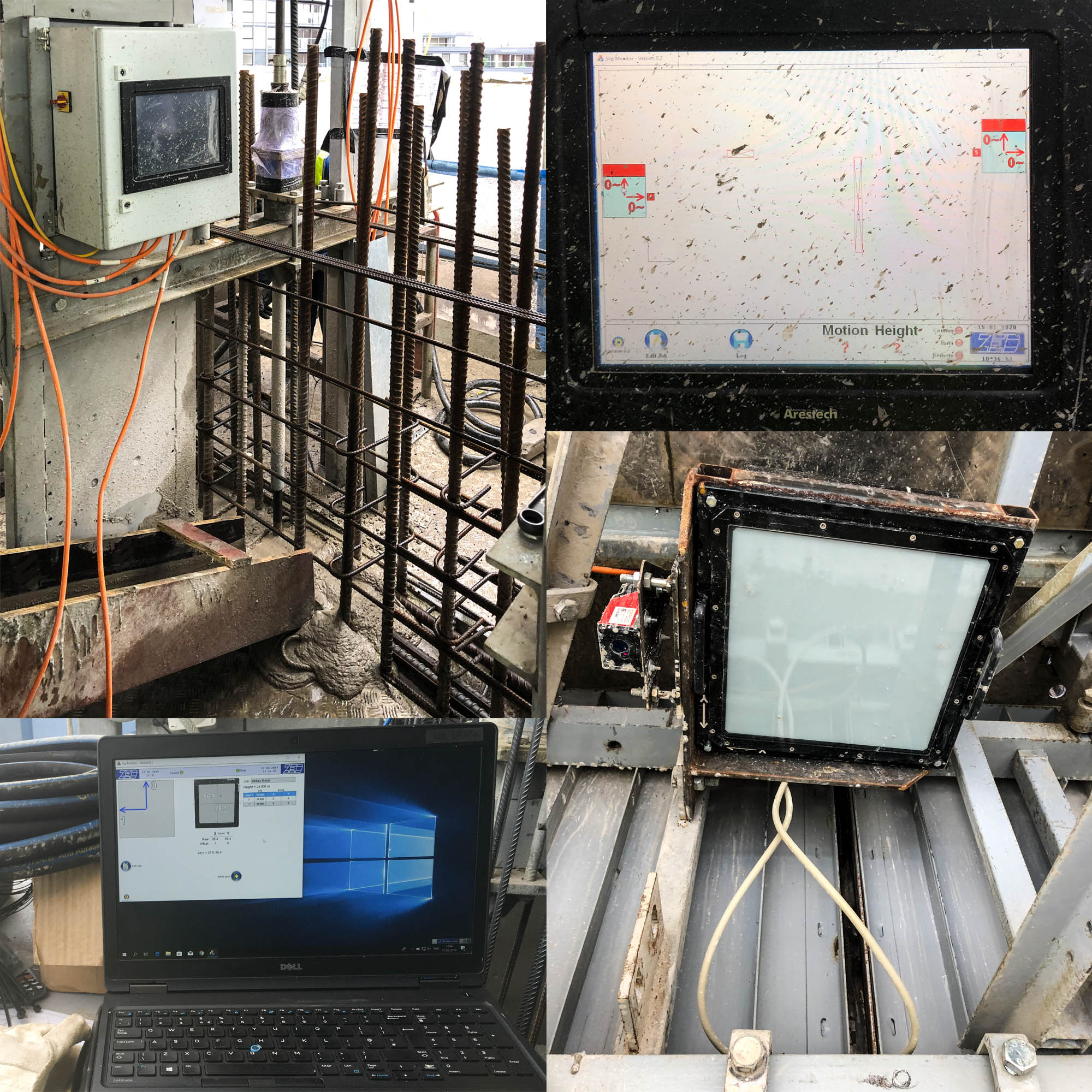Slipform

Working with one of the UK’s leading high-rise slipform constructors, ZED have designed and are developing a laser-based guidance tool to assist with high-rise vertical slipform construction.

Vertical slipform construction is one of the modern construction techniques for high-rise, typically 12-storys and above core or lift shaft construction. Slipform is an alternative to traditional formwork and jumpform, both of which receive poured concrete into a static shuttering/formwork mould. Conversely the slipform process, allows concrete to be poured into a moving formwork mould that travels vertically up the core or lift shaft as it is being constructed. During the process, the formwork rises continuously at a rate of about 300mm per hour and assists contractors in being able to complete the core or lift shaft construction at a speed of one floor per day. The slipform and the workers surrounding platform is raised by powerful hydraulic jacks.
Due to the nature of the slipform process, once the concrete pour commences, there is limited or no flexibility for change. As a result, extensive planning is required including highly accurate dimensions being taken in both major axes to ensure 100% accuracy of the concrete pour once it has set.

ZED Guidance Unit above concrete formwork void during pouring session (Top Left) ZED Guidance Display (Top Right) ZED Guidance Unit with attached fixed plumb laser (Bottom Right) Remote monitoring (Bottom Left)
To help achieve this critical process, ZED developed a vertical laser guidance system for use during the pour. The ZED guidance units are mounted level to where the concrete is being poured. This allows for monitoring of the dimensional progress of the slipform as it travels up the core or lift shaft. Fixed plumb lasers are fixed to the steel work immediately under the highest horizontal beam of the slipform structure to provide a vertical reference to allow for measuring of any slipform deviation.